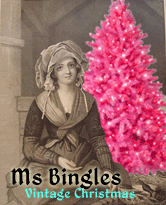 By Melanie Hennings for Yesteryear
By Melanie Hennings for YesteryearExactly 150 years ago, a mail company called the Pony Express was born. Created by Alexander Majors, William B. Waddell and William H. Russell, April 3, 1860, was the day it officially began with one rider headed east to St. Joseph, Missouri, and one rider headed west to Sacramento, California. The Pony Express was the fastest means of east-west communication and ran strong for eighteen months. On Oct. 24, 1861, however, the transcontinental telegraph reached Salt Lake City, Utah. It connected Omaha, Nebraska, to Sacramento, California, and the Pony Express was no longer the fastest way to communicate. The company made its final run Oct. 26, 1861.
The Pony Express trail stretched across eight states and was approximately 1,966 miles long. It took an average of ten days for St. Joseph mail to get to Sacramento, or vice verse. Scattered along the trail were 190 stations, anywhere from ten to twelve miles apart. At the stations were fresh horses for the riders and a place to stay after they had ridden their 75- to 100-mile section of the trail.
The riders carried mail year-round. Day and night, no matter the weather, the mail had to go through safely and on time. Riding for the Pony Express was not easy, but the pay was good. At a rate of $25 per week, the position caught the eye of many men, but there was one stipulation: A rider had to weigh 125 pounds or less. If a man met this standard, he took an oath of conduct, was given a small bible and sent out to ride.
One such man was Amos “Mose” Wright. He was born Jan. 11, 1840 in Exeter, Illinois, and at age ten, he and his family walked across the plains to Utah. There he served The Church of Jesus Christ of Latter-day Saints faithfully on several missions to the Indians before he started riding for the Pony Express. During his employment, he rode different sections of the 500-mile stretch between Salt Lake City, Utah, and Carson City, Nevada.
Amos was an adventurous and determined man. While working for the “Pony,” the superintendent of the line from Salt Lake to Carson City and Amos’ boss Major Howard Egan bought a pair of valuable mules. Shortly after, his mules were stolen. It is said that Amos was given leave to go and retrieve them from a ranch in the Sierra-Nevada Mountains. According to this account, he lay in a bunch of bushes one evening waiting for the mules to come to water, then he roped one and rode off bareback with the other mule following. He never stopped for the next 250 miles except to switch from one mule to the other. Afterward, he rested in the day and traveled by night until he reached Salt Lake — and a very happy Major Egan. When he was asked why he made haste the first 250 miles, he said, “I didn’t have time to stop until I got a safe distance from that watering place.”
After the Pony Express, Amos got married. In 1865 he moved to Bennington, Idaho, in the Bear Lake Valley. There he continued to live an adventurous life helping the Indians, faithfully serving his religion, and participating in political affairs until he died Feb. 24, 1915.
In honor of the Pony Express and Amos “Mose” Wright, a 150th celebration will be held in Montpelier at the National Oregon/California Trail Center, in conjunction with the debut of the traveling Smithsonian exhibit “Journey Stories” and a living history fair outside the museum.
•••
The Pony Express ride will leave the Trail Center parking lot in Montpelier at 10:30 a.m. on July 23 and head to Paris, Idaho. The mail will be official U.S. Mail and will be handed off to a new rider every mile. On July 24 the Pony riders will leave the Paris Post Office at 8 a.m. and ride back to the Trail Center in Montpelier. The public can watch the last rider come in between 10:30 and 11 a.m. Local riders, members from the Montana chapter of the Bunkhouse Outlaws and a direct descendant of Amos “Mose” Wright will carry the mail.
The living history fair will consist of live re-enactors doing hands-on workshops for the public. The public is welcome to “journey through time” at the living history fair after or before exploring the Smithsonian exhibit inside the museum. For more information regarding the weekend of July 23 and 24, its events, and the traveling Smithsonian exhibit, please visit http://www.oregontrailcenter.org/ or call toll free at 1-866-847-3800.
Thanks to YesterYear



































No comments:
Post a Comment